ZAO-SAN
Zao-san: Snow monsters, ski fields, mountain hags, multi-coloured crater lakes, hot springs, and more.
Jump to: My Hiking Guide to Zao-san
‘What’s up with ‘mountain climbing’? I just don’t get it.’
What a weird thing for a yamabushi to say, let alone a master yamabushi. I mean, yamabushi are mountain ascetics. The yama in yamabushi literally means mountain. You’d expect yamabushi to be ok with people climbing mountains, right?
However, my wise and all-knowing yamabushi Master Hoshino Fumihiro always says he can’t understand climbing mountains for the sake of climbing mountains.
You see, for Master Hoshino, it’s not that mountain climbing is bad. No, it’s exactly the opposite. For Master Hoshino, mountains aren’t there to simply be climbed.
Mountains are there to be worshipped.
Worshipping the Mountains of Japan

Since ancient times, the mountains of Japan have been revered as not only the abode of the kami and buddha, but as the kami and buddha themselves. At the same time, the Japanese traditionally believe that mountains are where our souls venture once they leave our physical bodies.
In the process, our souls turn into the very kami and buddha there to protect those of us down below. The souls of the ancestors that are worshipped turn into kami that bring good, the souls that aren’t, bring evil (for more on ancestor worship in Japan, see my article on Gassan). That is why yamabushi pray for the souls of those lost in natural disasters, or in other words, those without families or people to pray for them.
Yamabushi and The Shugendo Belief
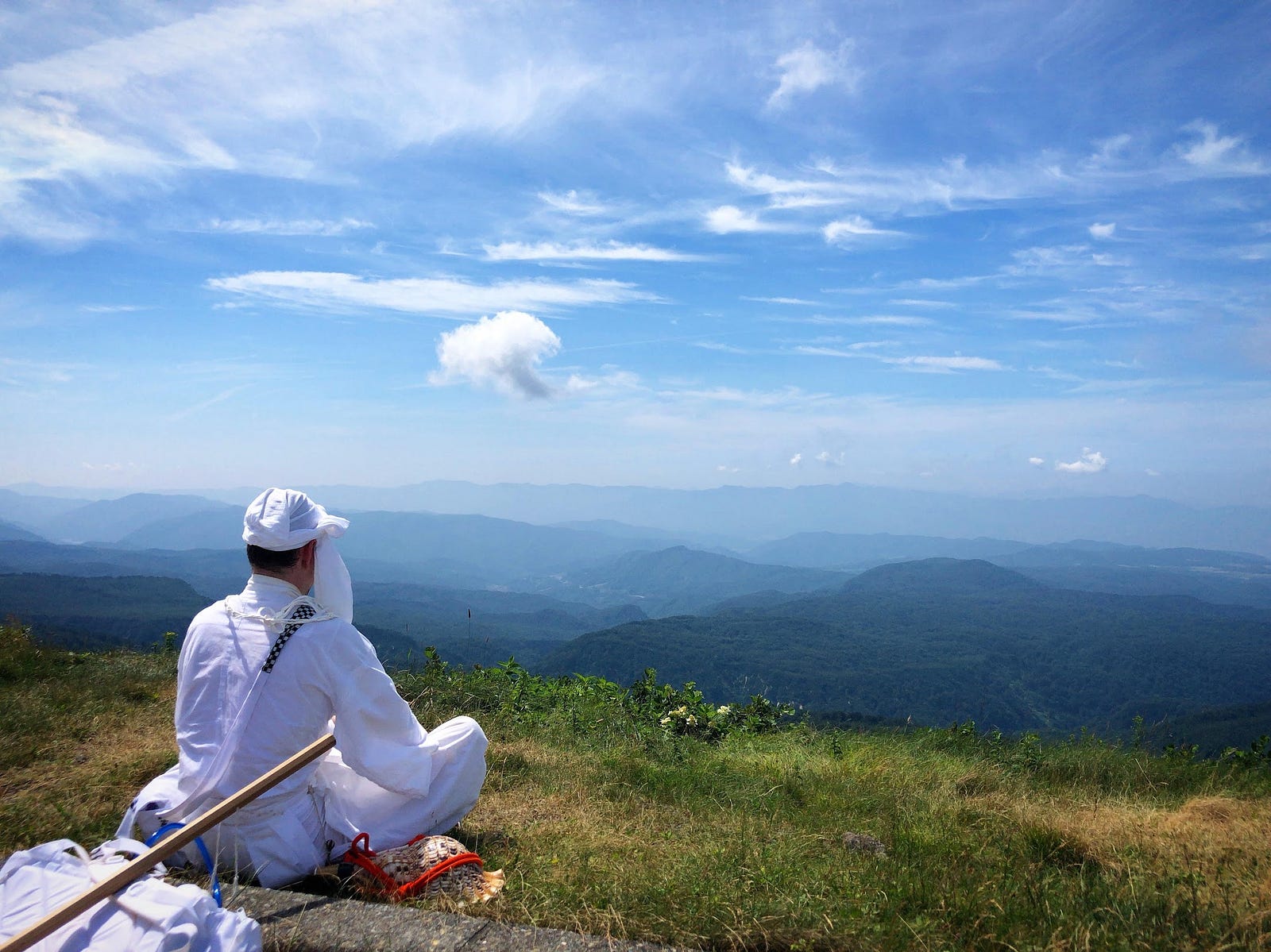
Mountains were a place where only the truly brave ventured in search of answers to life’s deepest, darkest, questions. Yamabushi follow Shugendo, the way, do, of gaining supernatural powers, gen, through ascetic practice, shu. Essentially, yamabushi undertake ascetic rituals on the mountains of Japan dedicated to the kami, buddha, and ancestors. This is not only to appease the kami and buddha, but also to pay respects while at the same time better getting in tune with nature.
So for some, simply climbing mountains ignores centuries upon centuries of the long tradition of nature and ancestor worship in Japan. Not only is it considered disrespectful to the kami, the buddha, or the ancestors, it is deemed disrespectful to the very mountains themselves.
Zao-san and the Zao Renpo
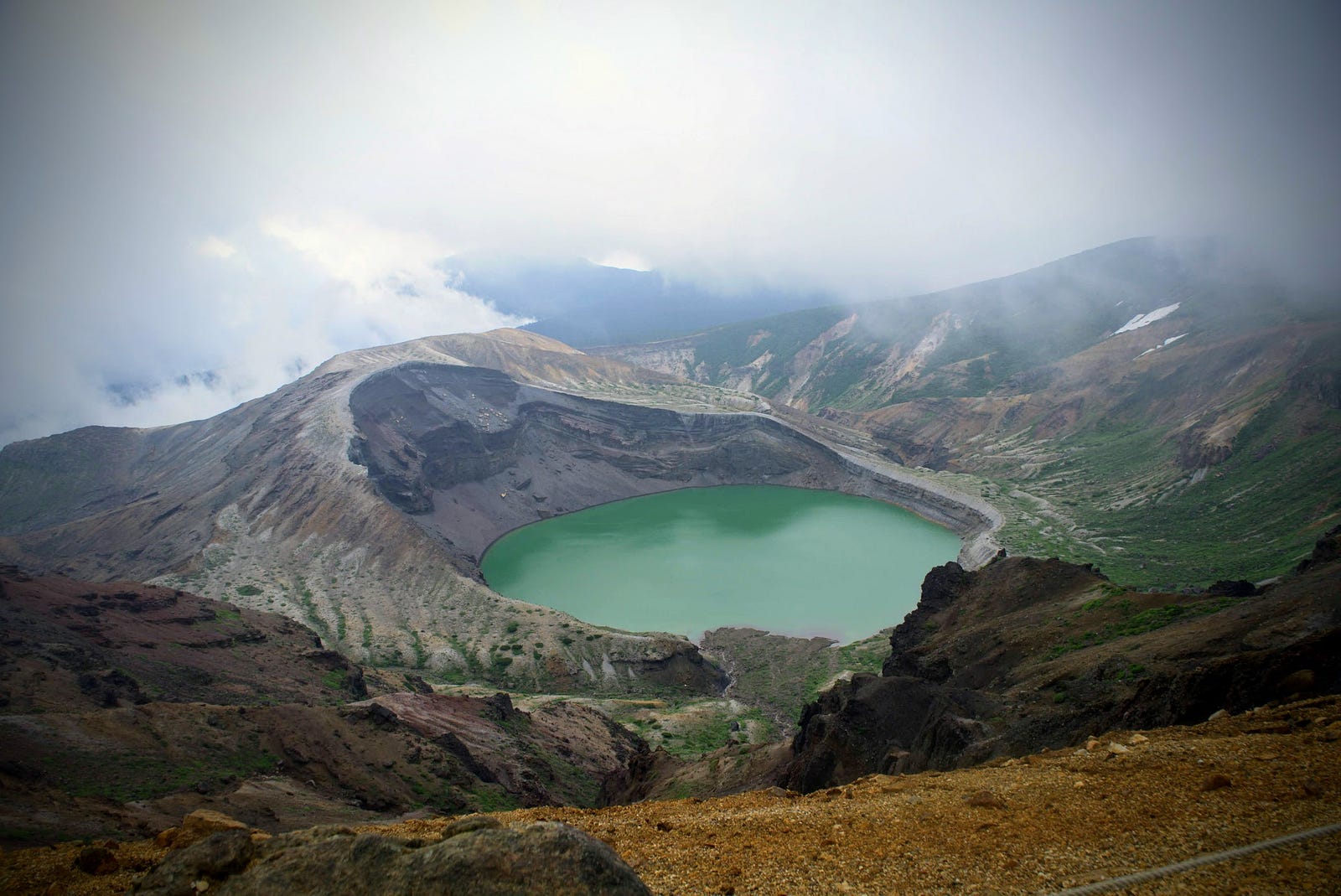
Take one of the 100 Famous Mountains of Japan, Zao-san, for example. Straddling the borders of Yamagata and Miyagi Prefectures, Zao-san, or the Zao Renpo as they are known, is a group of volcanic peaks making up the Zao Quasi-National Park along the Ou Mountains in the northern Tohoku region.
People flock from all over Japan to bathe in Zao’s famous Onsen hot springs, shred snow at the Zao Ski Field, or to simply bask in the glory of the awe-inspiring Okama, a 360m-wide crater lake also known as Goshiki Numa, the lake of five colours, due to the brilliant hues it creates.
Leisure Time on Zao-san

Internationally, Zao-san is known for its Snow Monsters, Aomori Todomatsu white fir trees that turn into ‘monsters’ in the winter; a phenomenon that occurs when snow sticks to built up rime caused by the freezing temperatures up there.
Yet under the surface, Zao-san has an extremely deep history of mountain worship, a history too important to simply brush aside for the sake of a relaxing bath, a nice view, or a few hours hitting the slopes.
Judging from the name Zao though, this much should be obvious.
Who or what is Zao? — Zao-san gets its name

When Shugendo spread from Yoshino, Nara Prefecture, all throughout Japan, it eventually made its way to Zao-san. In particular, in the latter stages of the Heian Period (794–1185), Katta-dake (Mt. Katta) near Zao-san’s Okama became a popular location for Shugendo training. Before long the Yamabushi enshrined Zao Gongen (avatar) there, and Zao-san as we know it today was born.
Who or what is Zao Gongen?

Gongen are the form a Buddhist god takes in Japan to provide salvation to the people. Much like A♭or G#, with Gongen, buddha and kami are one in the same taking on a different form depending on interpretation (learn more about that here).
Zao Gongen is particularly important for Shugendo. Not only is Zao Gongen the protector deity of Kinpusenji, the temple in Yoshino at the centre of Shugendo, Zao Gongen is the protective deity of Shugendo itself. That a group of mountains should be named after such a powerful deity is tantamount to its importance.
Yet if Zao-san is that powerful, exactly how did this mountain come to be known more for its tourism than its history of mountain worship? Weren’t there people to help maintain its tradition of mountain worship?
I’m glad you asked.
The Developing Custom of Mountain Worship in Japan

Over the centuries, Shugendo gave the mountains of Japan a special aura. Or should I say, Shugendo exposed their special aura. From the mid-Edo period, around the 1700s, civil war in Japan had all but died down, and the ordinary folk found themselves with extra time on their hands.
In those days inter-regional travel in Japan for ordinary folk simply wasn’t allowed. However, there was an exception for spiritual travel. If you were making a pilgrimage, you were allowed to travel to sacred areas all over the country.
And many millions did.
Zao-san Gets in on the Action

Mountains across Japan became very popular destinations, and a custom of visits to the mountains among said ordinary folk began. This was when Ko (講), annual group pilgrimages to sacred mountains began. Popular locations were the Dewa Sanzan with Dewa Sanzan Ko, the Kumano Kodo in Wakayama with Kumano Ko, and even to Fuji-san with Fuji Ko.
Dewa Sanzan Ko is still alive to this day, and is even available in English with Yamabushido’s Yamabushi Guided Hike and the Yamabushi Reset Program (full disclosure, these are programs I help develop and provide).
Zao-san was not spared the action, not by a long shot. On Zao-san, a custom known as Zao Oyama Mairi began on the Miyagi Prefecture side at Togatta Onsen. During Zao Oyama Mairi, visitors to the mountain made their way via Sai-no-Kawara (named after the banks of the Sanzu River, similar to the River Styx), to the summit of Katta-dake where they paid their respects.
Old Hags and Venerable Monks — The Inhabitants of Zao-san

Besides Okama and the snow monsters, visitors to Zao-san in those days would have come across many interesting spots indeed. For example, the area between Katta-dake and Kumano-dake passing by Okama is umano-se, the horse’s back, due to its distinctive shape.
In addition, many mountains in Yamagata are purportedly home to Yokai, supernatural beings such as Tengu found on Tengu-san, Tengu-yama, Tengusumotori-yama, or on the Kamuro Renpo. Zao-san is home to its own Yamanba (also read Yamauba). Literally ‘Mountain Hag’, a Yamanba is an elderly woman who inhabits the mountains and forests of Japan.
Well, at least they were an elderly woman.
Yamanba are older women who have been corrupted and transformed into monsters. They take on the appearance of a nice elderly woman offering shelter and food to unsuspecting travellers. However, Yamanba turn into their true form at the drop of a hat. Once revealed, they use powerful magic to try and eat the very people they set out to help in the first place.
Be very weary of elderly women on the mountains, so the saying goes.
Jizo-san — Protector of Children’s Souls
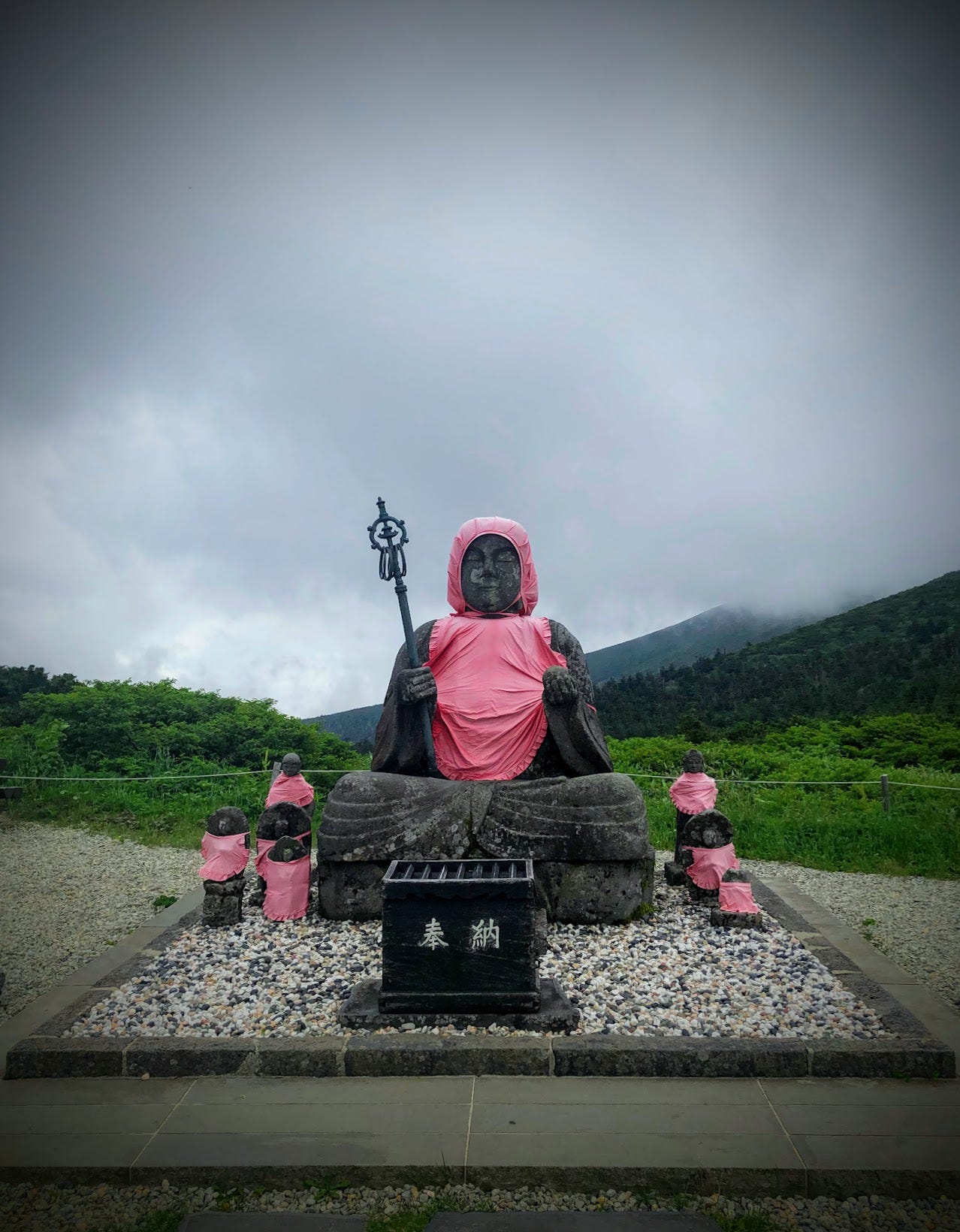
Don’t worry, though. Not everyone on Zao-san is out to get you.
If you’ve ever been out and about in Japan chances are you would have noticed statues of Jizo-san, a buddhist statue with characteristic red hat and bib often found along roads and in cemeteries. One of the main peaks of Zao-san is Jizo-dake (Mt. Jizo), named after the Buddhist Bodhisattva Jizo-san (Kṣitigarbha in Sanskrit, or O-Jizo-sama in formal Japanese).
What does Jizo-san do?
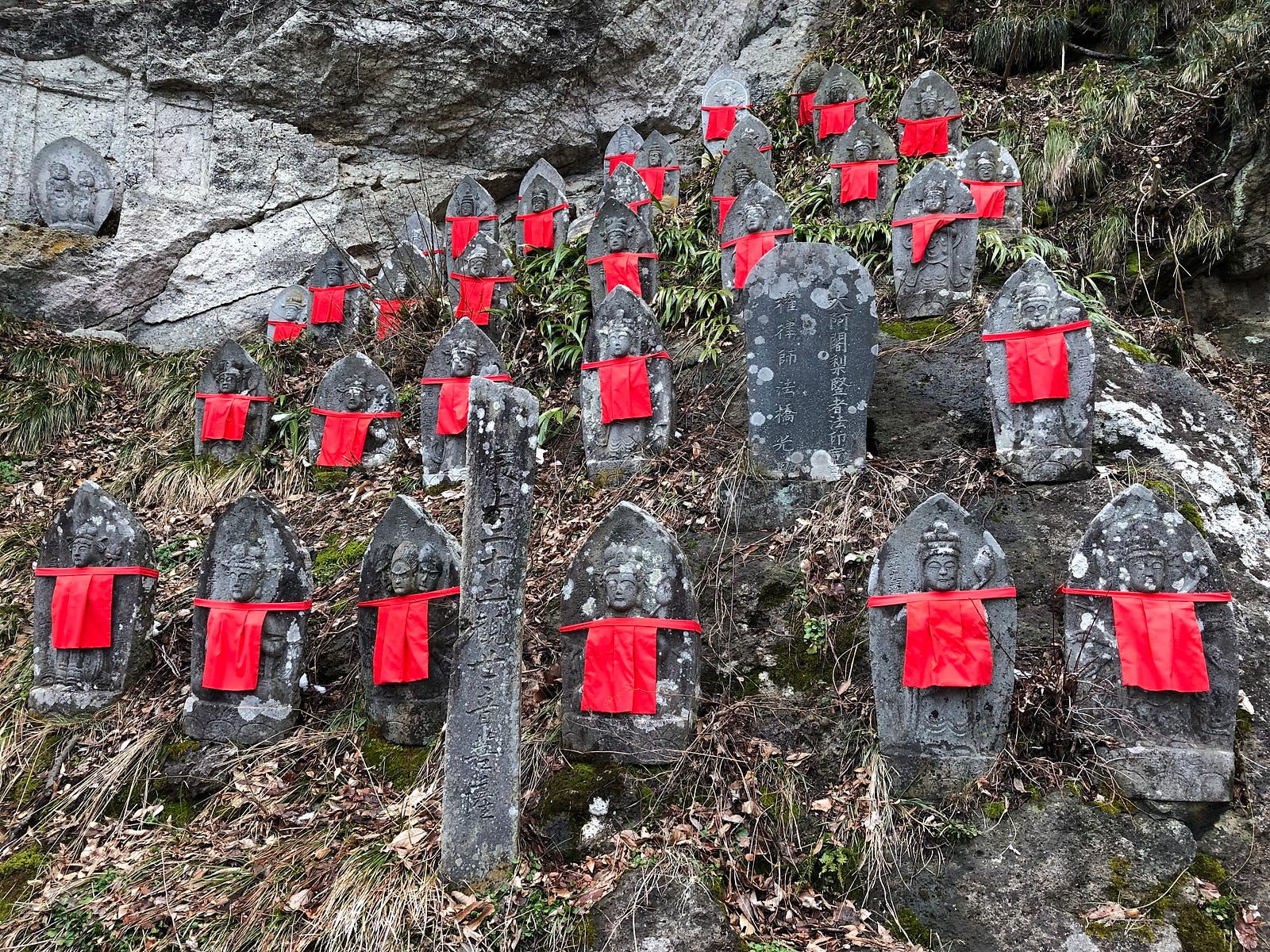
Jizo-san has a very important job; looking after the souls of unborn babies, and children who die before their parents do. In Japan, they believe children who die before their parents cannot cross the Sanzu River that takes them to the afterlife. Jizo-san hides these children in his clothing to protect them from evil spirits on behalf of the parents.
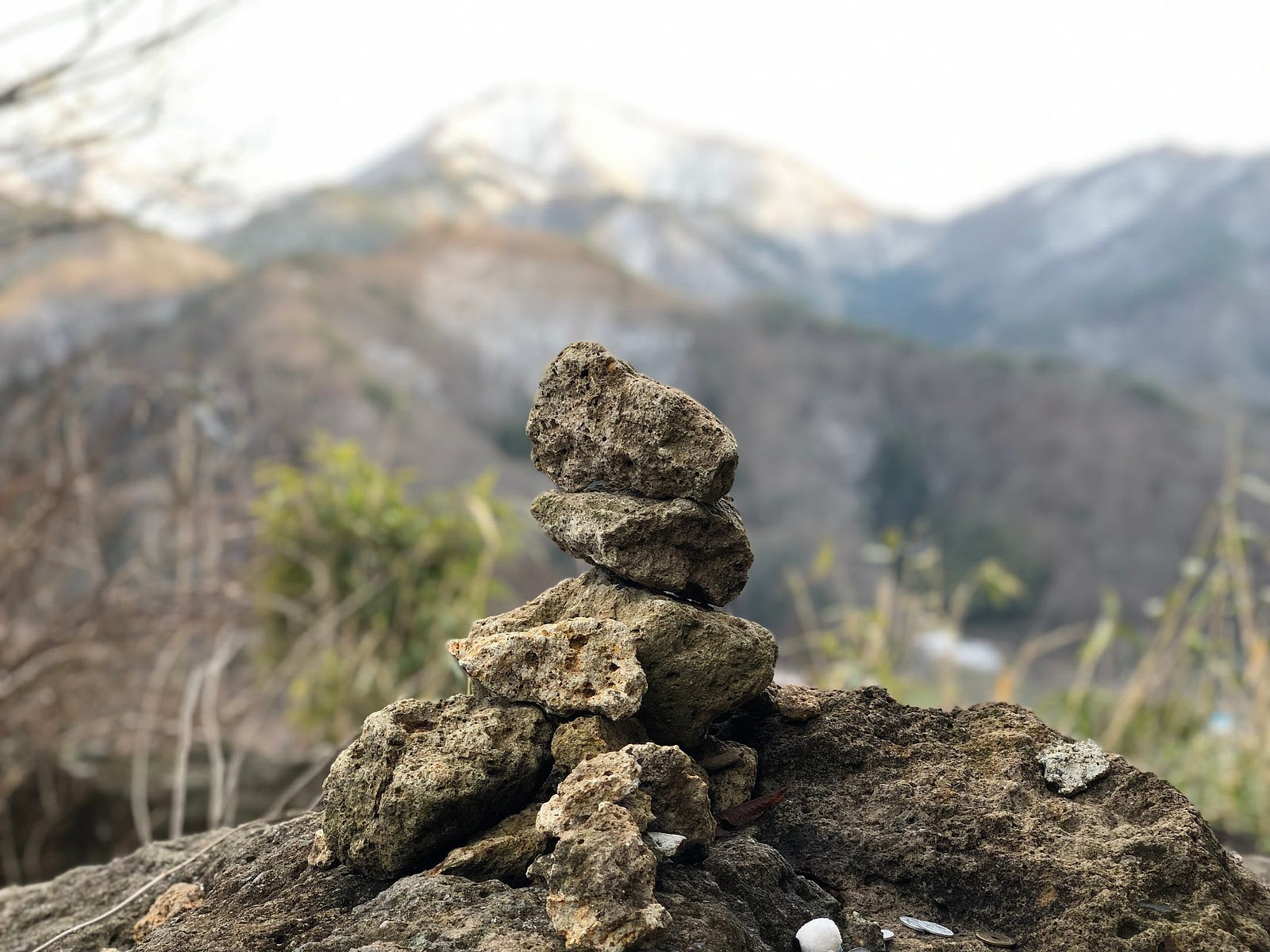
Have you ever noticed small piles of rocks stacked on top of one another on the mountains? The rocks are there in the hopes of shortening the amount of time children have to suffer in the underworld. Legend has it that unborn children are condemned to stack these stones on top of each other in vain, as they always fall over. Demons push over these stacks to torment the children, but as protector of these children’s souls, again Jizo-san offers safe haven and protection from the demons by hiding the children under his garments.
Red is a protective colour in Japan, which is why Jizo-san always wears red. Many people place red hats and bibs on Jizo-san to help protect the children he saves.
The Decline of Journeys to Zao-san

Over the centuries, many thousands visited Jizo-san while keeping a lookout for Yamanba. Then, despite suffering damage during the Meiji Period Shinbutsu Bunri (the separation of Shinto from Buddhism from 1868 to around 1873), the custom of Zao Oyama Mairi remained popular until after WWII.
However, in 1962, a road was completed connecting Zao Onsen and Togatta Onsen on the Yamagata and Miyagi Prefecture sides of Zao-san respectively. Known as the Zao Echo Line, this road led to a huge boost in tourism to the area, but it came at the expense of Zao Oyama Mairi. In some places the road was built directly on top of the ancient trails, and many, if not all, stopped walking the ancient paths. Before long, its existence was all but forgotten.
Until 2014, that is.
Zao Kodo Kai and the Zao Legacy Trail
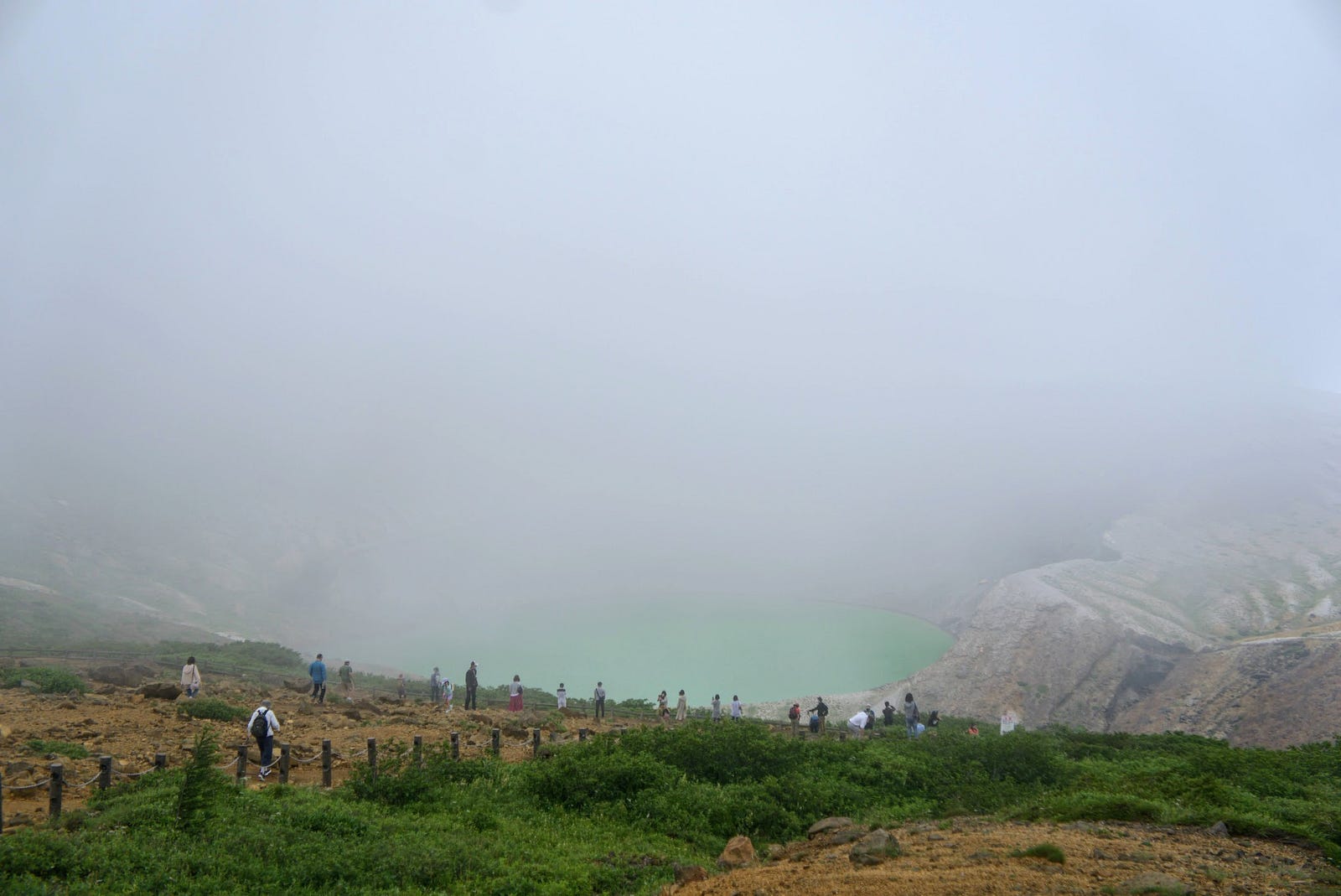
A local taiko Japanese drum team from around Zao-san held annual performances at Sakuramotobo temple in Yoshino, Nara Prefecture. Curious as to the origins of Zao-san, and the history of Shugendo there, the group asked the chief priest of Sakuramotobo temple, Ryonin Tatsumi, for help in re-establishing the Shugendo tradition.
After years of neglect, many of the trails had fallen into disrepair, so the first step was to get them back to a hike-able state. Those interested in the revival formed a group called the Zao Kodo Kai led by Endo Yuichi, the owner of a local cafe and a local town councillor.

In 2017 Endo Yuichi visited Sakuramotobo in Yoshino and informed Ryonin Tatsumi that they had repaired the paths. He also requested to climb Zao-san together. It wasn’t until 2020 that Tatsumi was able to come, and as he did so he brought with him lessons of Shugendo, just as the founder of Shugendo En-no-Gyoja had spread its teachings to Zao-san many centuries ago.
So, for the first time in more than 50 years, the ancient trails are walkable, and they have since been named the Zao Legacy Trail.
Read the full article here.
Paying your respects on the mountains of Japan

Even though these days mountains such as Zao-san are known more for their tourist attractions, they have been revered as objects of worship for far longer than any of us could ever imagine. Mountains in Japan are not only the abode of the kami and buddha, they are the kami and buddha, and they demand our respect.
Don’t get me wrong. I’m not saying if you’re not going to pay your respects, don’t even bother going to the mountains.
I’m saying that if you ever happen to find yourself on a mountain in Japan, at the very least, be sure to show your appreciation lest you incur the wrath of the kami.
Or the buddha, the ancestors, Yamanba, or Master Hoshino, for that matter.
How to get to Zao-san

There are multiple busses from Yamagata Station to Zao Onsen. The ride takes about 40 minutes and costs ¥1000 for adults, ¥500 for children. You can even continue on to Okama, which leaves Zao Onsen at 10:10 daily, returning at 1pm.
The Zao Ropeway and Katta Lift both reach the trails at the top of Zao-san. It’s even possible to drive all the way to Katta-dake and Katta-mine shrine using a toll road off the Zao Echo Line called the ‘Zao High Line’. Plus, hiking up the mountains is of course available.
Popular Hiking Routes on Zao-san

The most popular hiking route on Zao-san is from Jizo-dake to Katta-dake via Kumano-dake (Mt. Kumano), or vice versa. Both ends connect to the Zao ropeway, and this route also allows you to take in the main peaks, Jizo-san, Okama, Umano-se, the horse’s back, and of course everyone’s favourite ‘old woman’, Yamanba.
There are two peaks on Zao-san on the 100 Famous Mountains of Yamagata list; 1) Jizo-dake (Mt. Jizo), and 2) Kumano-dake. Katta-dake doesn’t lie in Yamagata Prefecture so isn't on the list, but is very close and definitely worth visiting. Fubo-san (Mt. Fubo, the unforgettable mountain) is yet another mountain nearby, and Sanpokojin-san (Mt. Sanpokojin) lies right next to Jizo-dake on the other side of the Jizo-san statues.
The Zao Ropeway
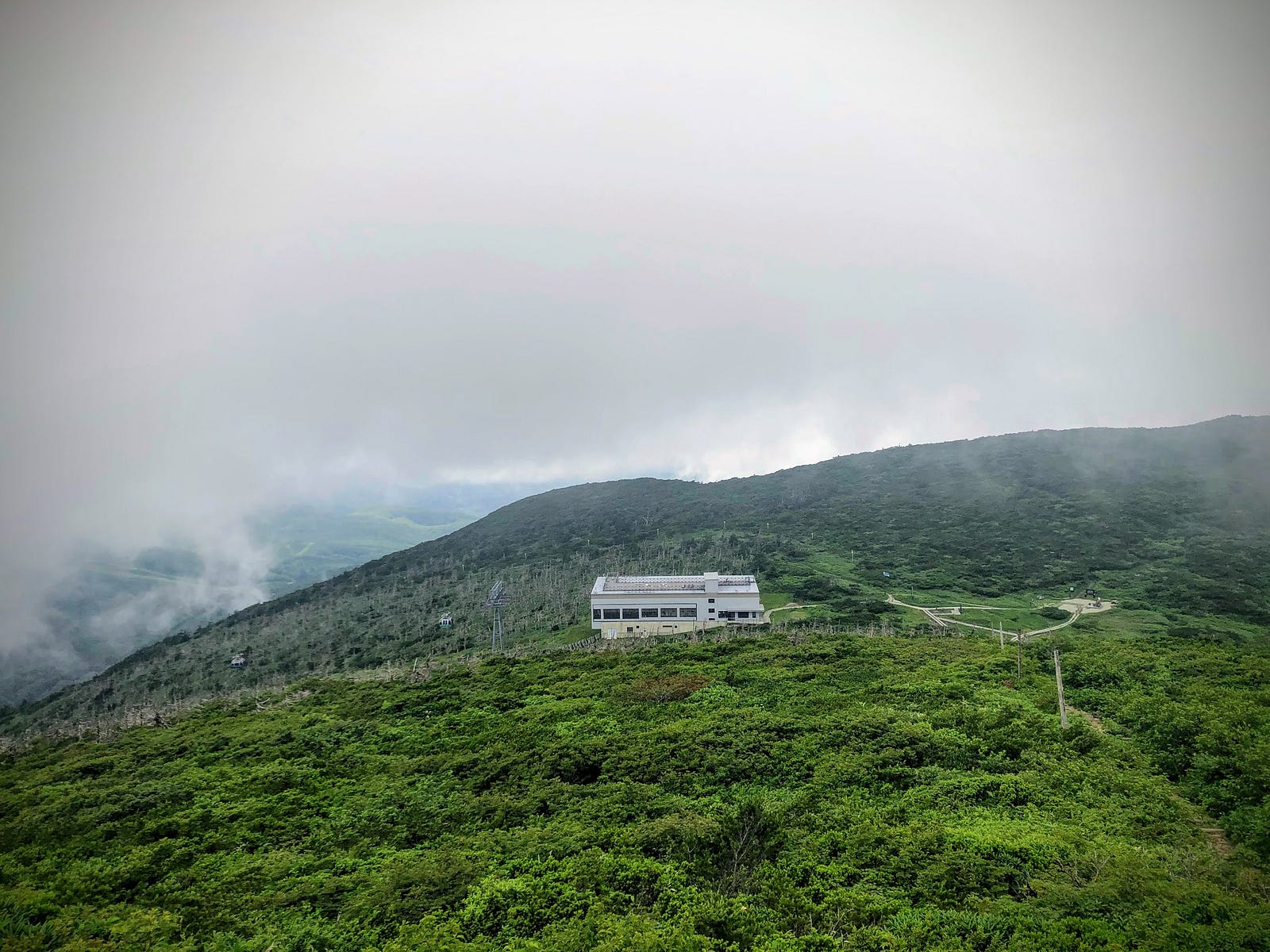
The Zao Ropeway is a gondola located in Zao Onsen that goes to Jizo-sancho station at the base of Jizo-dake and Sanpokojin-san. From April 1st to December 1st, the Zao Ropeway is in operation between the hours of 8:30am and 5pm. A ticket to Jizo-Sancho is ¥1500 one-way, or ¥3000 return.
The Katta Lift

Accessible from the Zao Echo Line, The Katta Lift is a single-person ski lift that goes to the Katta-dake side of Okama. For the hiking season, the lift is operational from April to early November between the hours of 9am and 4:30pm, and costs ¥450 one-way or ¥750 return. Taking this lift to the crater in summer or autumn is also a great idea for a picnic or a day out.
Jizo-dake (Mt. Jizo)
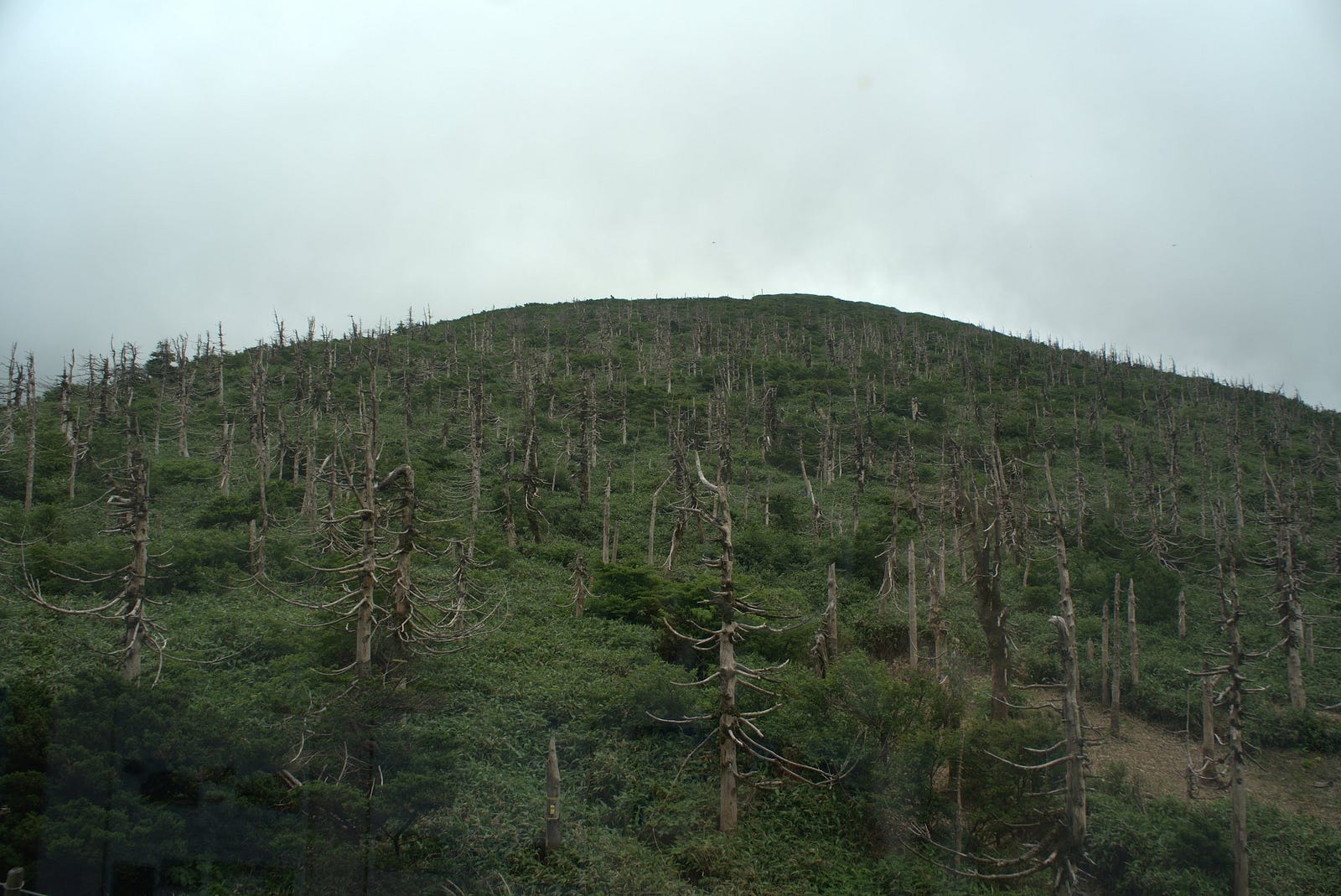
Jizo-dake is easily reachable from the Zao Ropeway. Simply take the ropeway from Zao Onsen to the last stop called Jizo-sancho. From here it is a very short walk to the Jizo statues. Then, head to the right on the path closest to the Zao Ropeway. After about 10 or 15 minutes you will arrive at the summit of Jizo-dake. A left from the statues will take you to Sanpokojin-san.
People often start their hikes at Jizo-dake. One great option is to hike up Jizo-dake, then continue in the same direction. After about an hour or so you will reach Kumano-dake from where you can see Okama. If you keep following the trail over Umano-se (the horse’s back), in about an hour you will arrive at Katta-dake.
Kumano-dake (Mt. Kumano)

Lying between Jizo-dake and Katta-dake, Kumano-dake is named after Kumano Gongen, in reference to Kumano Jinja. Kumano-dake doesn't have a ropeway yet it commands views of the Okama and is a great destination in and of itself. Kumano-dake is reachable after hiking for a while from either the Zao Ropeway or Katta Lift.
Katta-dake (Mt. Katta) — Home to Katta-mine Jinja
Situated on the Miyagi Prefecture side of Zao-san, Katta-dake is home to Katta-mine Jinja. The original destination of Zao Oyama Mairi, Katta-mine Jinja was the only shrine with someone at the desk. At the shrine they sold all manner of omamori charms, and had goshuin stamps available as well.
Notes on hiking Zao-san
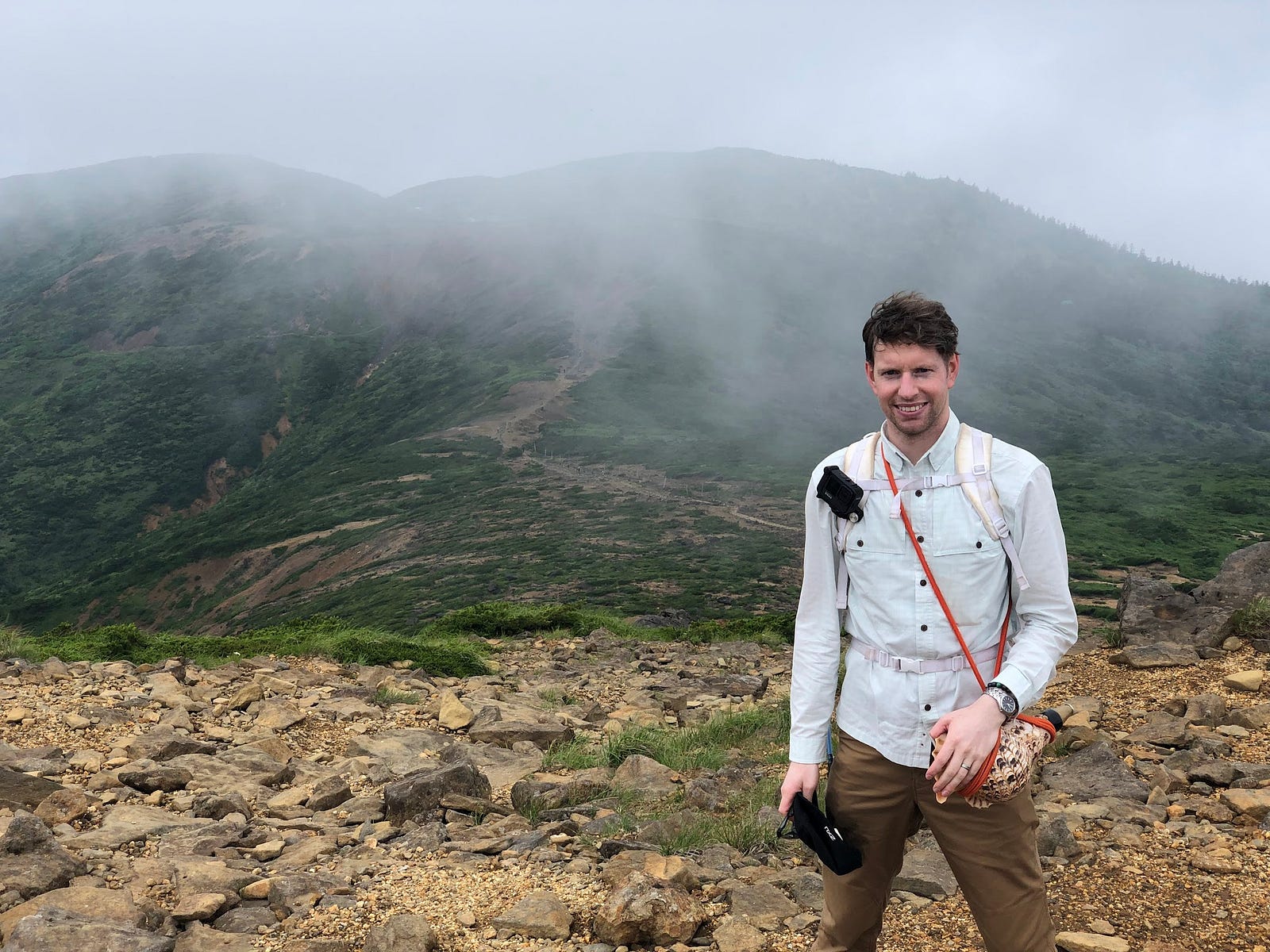
If you’re really serious, consider talking to the Zao Kodo Kai. They have a number of model courses, and Gyoja (ascetic) guides as well.
The peaks of Zao-san are all connected by well-trodden and well-maintained trails. The trail at the top is relatively flat, but there are a lot of small volcanic rocks so good walking shoes are a must. The mountain is also very open. Be careful of windburn, or heatstroke during the summer.
Please also note Zao-san is an active volcano with a current alert level of 1. This is the lowest level whereby you simply have to be aware that it is a volcano (latest information here).
Nearby locations worth checking out
Zao Onsen
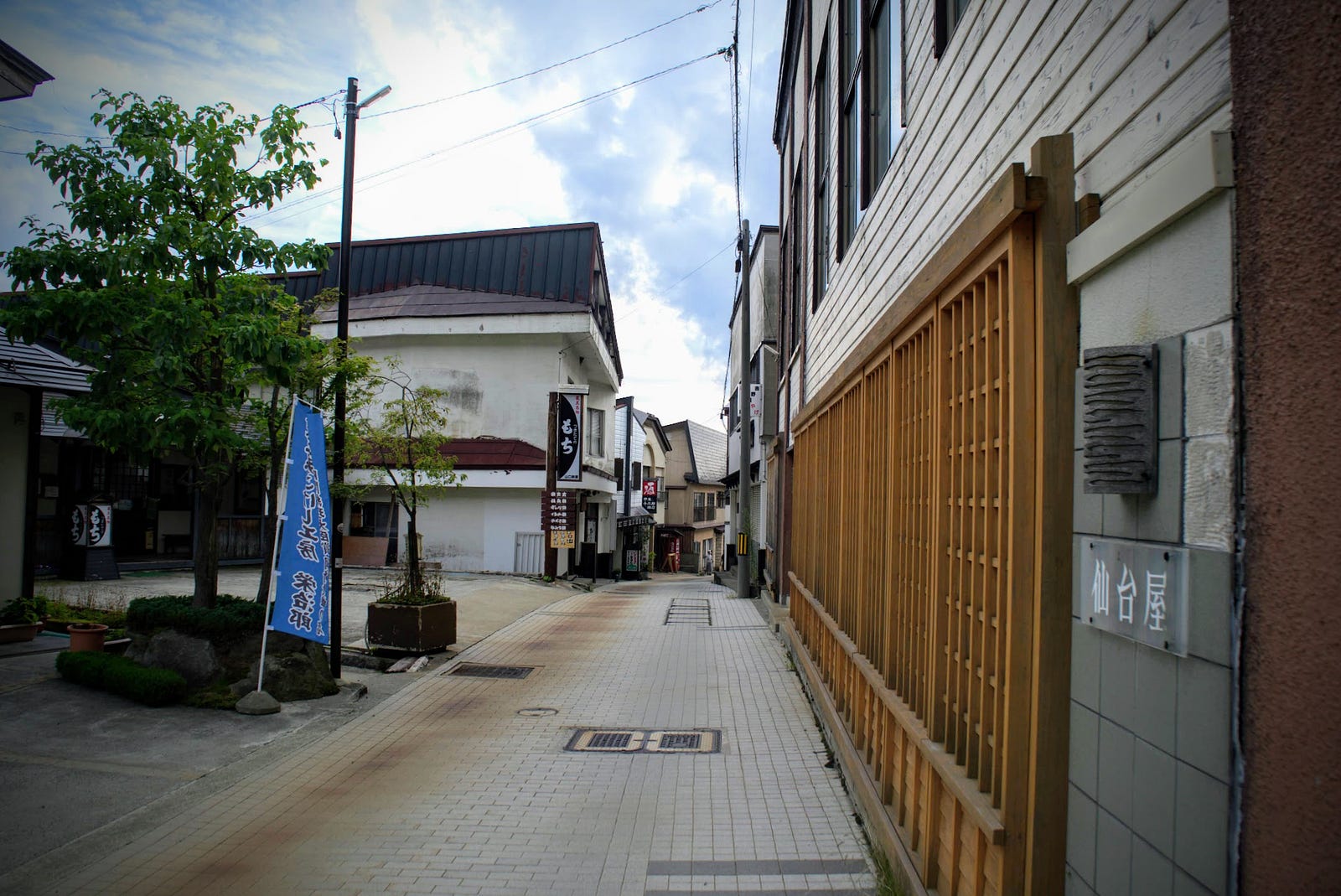
Supposedly dating back to 110 AD, Zao Onsen is a hot spring village tucked into a pocket of Zao-san. Legend has it the onsen started when a warrior cleaned an arrow wound in the spring water, and it healed up miraculously well. Zao Onsen is located at the bottom of the Zao Ski Field, so is in the perfect location for a relaxing time after spending a day on the slopes, or up on the mountains.
Zao Ski Field and the Zao Snow Monsters

As you can probably tell, Yamagata Prefecture is in the middle of snow country, and Zao Ski Field is its premiere location to shred some snow (Yudono-san Ski Field on where else but Yudono-san, and Jangle Jungle on Kurobushi-yama also come recommended).
In the middle of winter, the white fir trees on Zao-san turn into ‘snow monsters’. If you stay in Zao Onsen, it is really easy to jump on the Zao Ropeway and see the monsters at night, when they truly come into their element.
Yamadera (Risshakuji Temple)
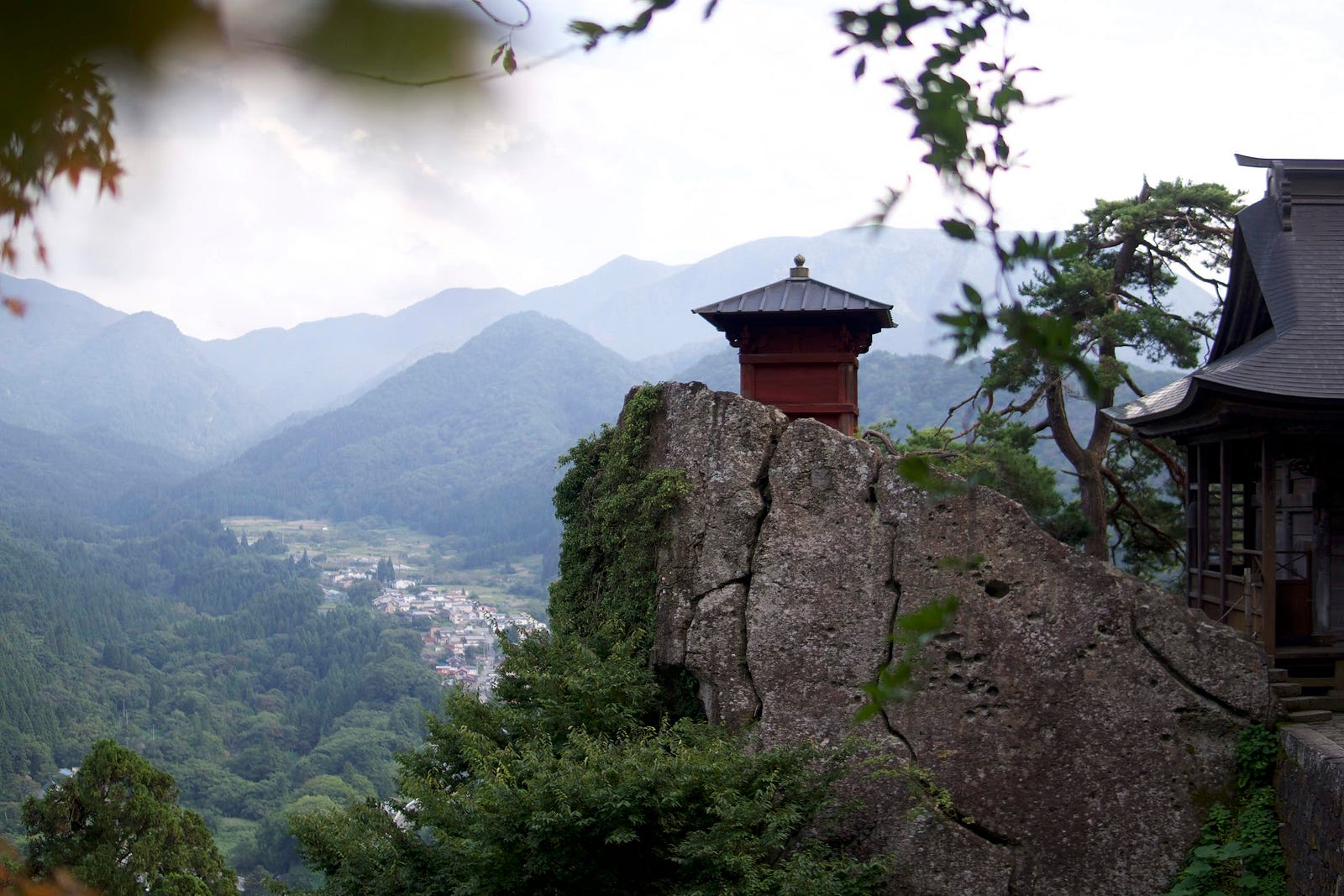
More commonly known as Yamadera (lit. mountain temple), Risshakuji Temple is one of the most famous spots in Yamagata Prefecture, and isn’t too far of a drive from Zao-san. Yamadera is not only an amazing place to simply take in, but it is also very famous for Haiku poetry. Japan’s premiere Haiku poet Matsuo Basho didn’t originally intend on visiting Yamadera, but it is a good thing he did as he composed the following Haiku (translated by yours truly) that encapsulates the nature of Yamadera to a T.
Such serenity
Seeping deep into the rock
The cicada's shrill
Matsuo Basho
Also popular is the Taramizu Remains, AKA the hidden Yamadera (Ura-Yamadera). Behind Yamadera lies Amayobari-yama and Omoshiro-yama as well, both excellent hiking spots.
In short: Zao-san (Mt. Zao) is known for
- Okama, the crater lake also known as Goshiki-numa, the pond of five colours
- Jizo-san statue at the base of Jizo-dake
- The Zao Snow Monsters, white fir trees with a menacing appearance during the winter
- Zao Onsen, an ancient Hot Spring Resort
- Zao Legacy Trail, ancient pilgrimage route up Zao-san
- Umano-se The Horse’s Back
- Home to Yamanba (or Yamauba), old hags or witches of the mountains that were corrupted and turned into monsters
References
Kumano-dake on Yamap (Japanese)
Katta-dake on Yamap (Japanese)
ZAO-SAN
蔵王山 | ざおうさん
Zao-san (Mt. Zao, Jizo-dake, Kumano-dake, Katta-dake, Fubo-san, Sanpokojin-san)
Zao-san (Jizo-dake, Kumano-dake)(蔵王, 地蔵岳, 熊野岳, ざおう) is a 1841m (6040 ft.) peak in the Murayama region of Yamagata prefecture best climbed from June to October. Zao-san is a level 2 in terms of physical demand, which means it is relatively easy to hike, has a B technical grade, which means it doesn’t require too much expertise, and you want to allow at least 3 hours for a climb.
Mountain Range
Zao Renpo
Region
Murayama
Elevation
1841m (6040 ft.) (Kumano-dake)
Technical Demand
B (doesn't require too much expertise)
Physical Demand
2 (relatively easy to hike)
Trails
Multiple. 1) Jizo-dake to Katta-dake via Kumano-dake, 3 hours return (not including transport)
Best time to climb
June to October
Day trip possible?
Yes
Minimum Time Required
3 hours return
PDF Maps by TheHokkaidoCartographer and JapanWilds.org. See all here.
100 Famous Mountains of Japan, 100 Famous Mountains of Tohoku, 100 Mountains of Yamagata, Ancient paths and trails, Autumn Leaves, Buddhist Temples and Shinto Shrines, Favourites, Full Day Hikes, Half-day hikes, Hard to reach, Historical Hikes, Hyakumeizan 100 Famous Mountains of Japan, Kaminoyama City, Miyagi, Mountain Flowers, Mountains above 1000m, Murayama Region, Myths and Legends, Onsen Hot Springs, Ou Mountain Range, Short hikes, Shugendo Mountains, Ski fields and snow parks, Volcanoes, Waterfalls, Wetlands, Winter Hikes, winter hiking, yamabushi, Yamagata City, Zao Renpo
YAMABUSHI NEWSLETTER







